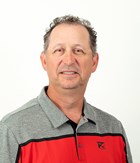Recommendations for Fall Burndown
BY Dairyland Seed Agronomy Team
Many areas of the Dairyland Seed footprint experienced flushes of weeds though out the growing season due to varying amounts of precipitation. As we continue to scout fields and note the current crop conditions, it is important to note the efficacy of our weed control systems. We have noticed in several areas where winter annual weeds are present and in full seed, as combines roll through these weedy areas, they act to disperse this weed and can cause another flush this fall.
Early control of fall germinating, winter annuals such as Marestail, Field Pennycress, Chickweed and others can allow for a clean start to weed control in the spring especially in no-till systems. Winter annuals do not winterkill, and they will be heartier if allowed to overwinter. Winter annuals that over winter are harder to kill in the spring, often the best mode of control for these weeds is a burndown in the fall. It can be challenging to work a herbicide application into the fall work load, but when done correctly a fall burndown can help extend spraying windows in the spring and allow for cleaner fields through planting.
Considerations for fall burndown applications:
- Common herbicides used are dicamba, 2,4-D or a combination of these two products. Common names for combination products are WeedMaster® and Brash®, among others. Follow label recommendations on rates and adjuvant for these products.
- Temperature ranges to keep in mind for application. Control is best achieved when daytime temperatures are 50°F or greater and nighttime temperatures are 40°F or greater.
- The addition of glyphosate to a fall burndown mix is not necessary unless perennial weeds are present. In most cases, grass weeds that are present will winterkill.
- In fields with past weed issues a residual herbicide can be used this fall to aid in keeping those fields cleaner longer next spring. There are several options for fall residuals, be sure to consult the label for plant back restrictions for possible spring crops.
If you have questions on specific products or weed identification, contact your Dairyland Seed DSM or Regional Agronomist.

Brian Weller
Western Region
507.456.3034

Rod Moran
Western Region
507.456.3034

Dan Ritter
Central Region
219.863.0583

Branden Furseth
Northern Region
608.513.4265

Mark Gibson
Eastern Region
260.330.8968

Amanda Goffnett
Eastern Region
989.400.3793

Ryan Mueller
Eastern Region
989.400.3793
